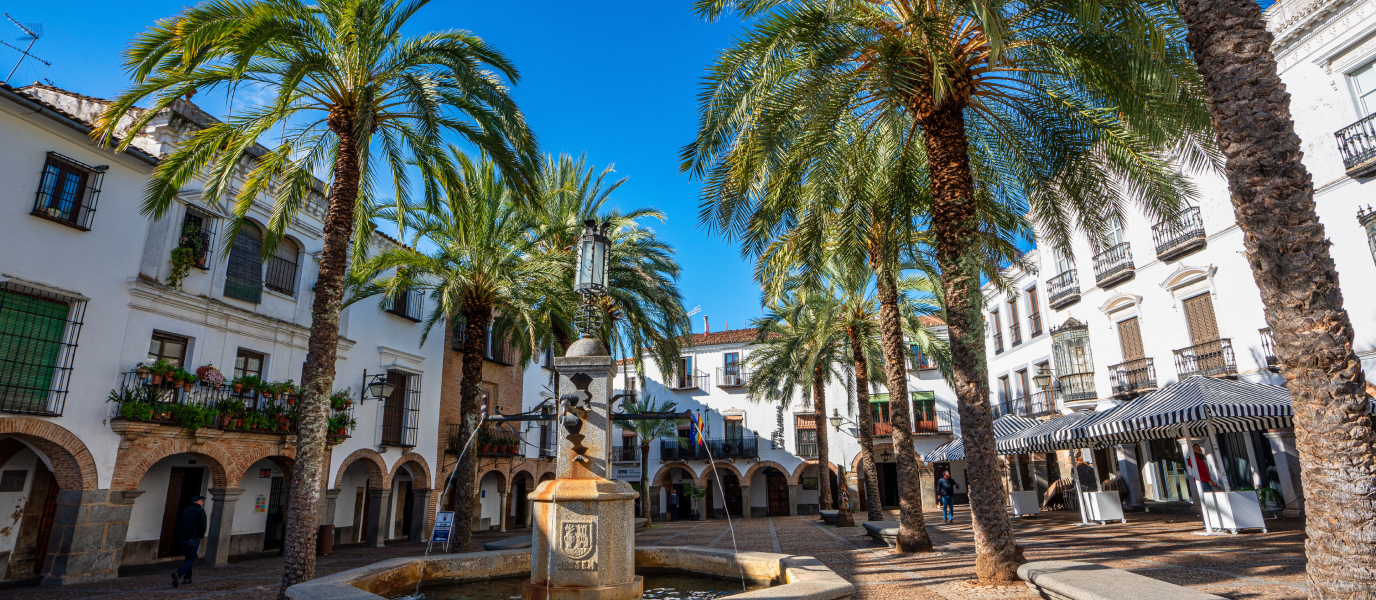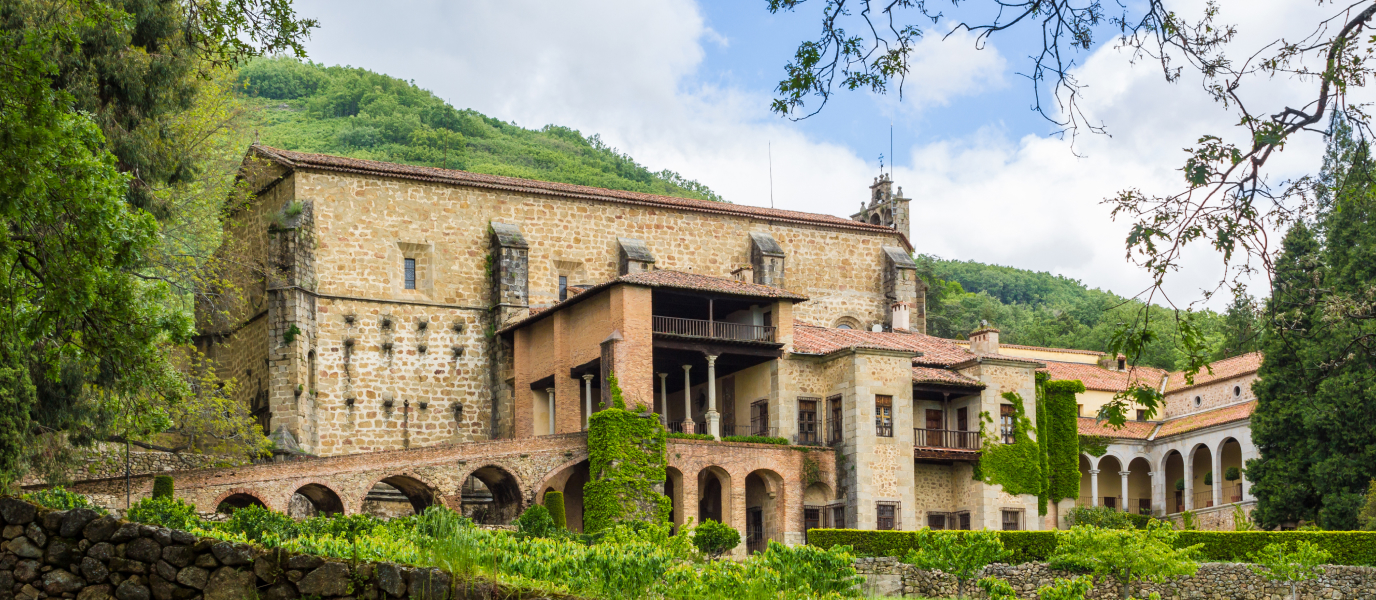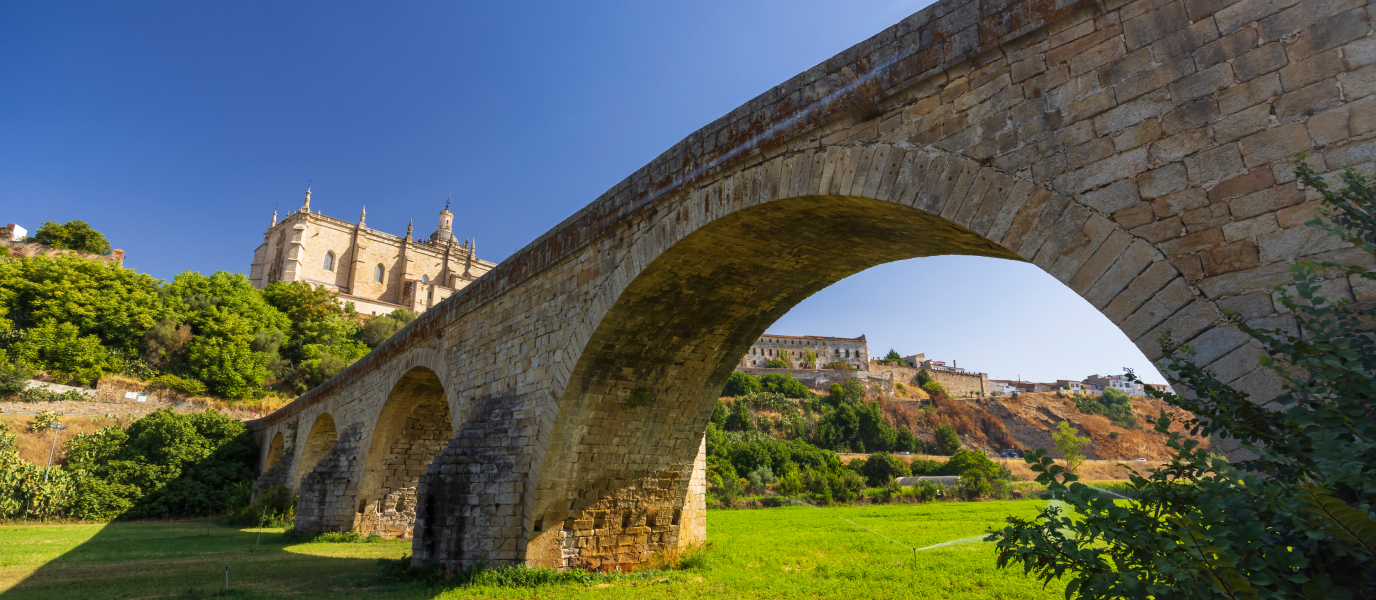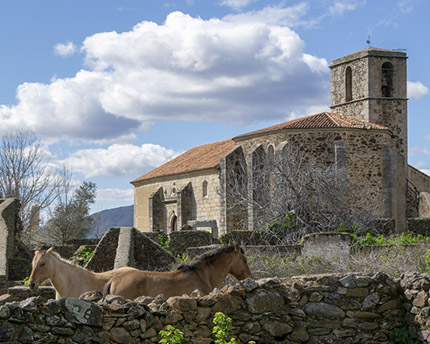Zafra is a small town, brimming with history in the province of Badajoz. Its historic monuments and landmarks make up the beautiful historic centre. The city has a meagre population of 17,000 and has quietly remained off the tourism radar. However, its thriving commercial industry and strategic location between Seville and Mérida have given the city a surprising pulse.
The Romans originally referred to Zafra as Segeda or Restituta Iulia Imperial and it constituted a strategic bastion along Vía de la Plata (the ‘Silver Route’). When the town fell under Islamic rule, it was renamed Safra and continued to act as a key stronghold due to its location along the borders of the Caliphates of Seville and Badajoz.
The town’s trajectory was forever changed when the Suárez Figueroa family (the Dukes of Feria) where awarded the town, following the victorious Reconquista in the 13th century. The family was the town’s most important patron and the initiatives they rolled out not only converted Zafra into a very prosperous town but also fitted it with stunning civil buildings which today make up the historic centre. In fact, the Old Town has been designated a National Heritage Site.
Come discover this picturesque town, snuggled deep in southern Extremadura and steeped in history and culture – a not-to-missed destination!
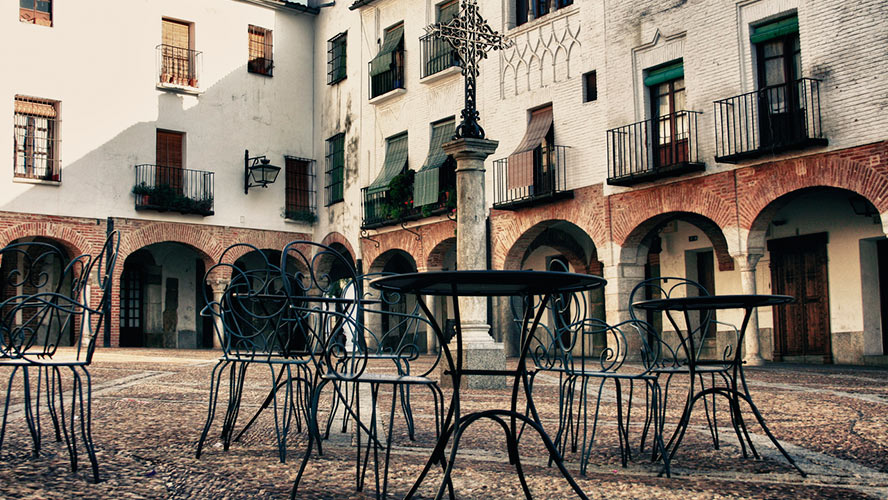
Palacio de los Duques de Feria
The top attraction in Zafra is the Alcázar Palacio de los Duques de Feria. The imposing, 14th-century fortress-palace seamlessly merges sturdiness and luxury. It includes eight towers, four of which measure 24 m and make up the stunning façade. It also has a lavish, Renaissance-style interior patio made entirely of white marble. The patio was added in the 17th century along with two new wings, galleries and a passageway connecting the palace to Iglesia de Santa María.
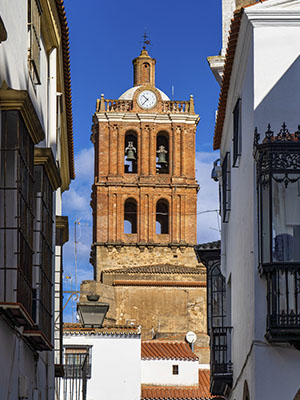
The palace has served many purposes over the course of history, including a prison, a hospital and a school. Its doors are always open so visitors can explore for themselves the architectural splendour the building boasts, including the iconic Sala Dorada with its coffered ceiling from to the 16th and 17th centuries.
Parroquia de la Candelaria
Located right at the heart of the historic centre rises the majestic, 16th-century Parroquia de la Candelaria (also referred to as Colegiata de la Candelaria). This striking, Gothic-style church harbours priceless works of art such as the stunning altarpiece, featuring works by Zurbarán; the monumental organ; and the elaborate murals adorning the chapels of Virgen de la Valvanera and Virgen del Carmen. The town’s wealthy traders were major patrons of the arts and funded much of the art found in the church. The church achieved further prestige (and more works of art) when it as declared a collegiate church in the 17th century thanks to the campaign launched by the Dukes of Feria.
Museo de Santa Clara de Zafra
The Dukes of Feria were the town’s most important architects, commissioning the construction of all types of buildings which can be admired today. These include Alcázar Palacio, Convento de Santa Clara and Monasterio de Santa María de la Valle. In fact, this monastery was built on order of the first Duke of Feria in the 15th century and is still a working convent for cloistered nuns. There is also a museum on site with a fascinating collection of more than 1,000 pieces of religious art. Even though it is a working convent, some sections of the monastery are open to the public such as the gilded chapel with its stunning altarpiece; the funeral chapels and striking collection of reliquaries.
El Acebuche, the best restaurant in town
After a morning of sightseeing, there is better way to replenish energies than with a delicious meal, which should naturally include the locally produced jamón ibérico – the best in the country. One of Zafra’s top restaurants, El Acebuche, is located near Plaza de España and offers two different menus composed of succulent traditional dishes. Start off a selection of tapas (a good time to order some jamón ibérico) and follow up with a deliciously prepared main. The kitchen’s signature dishes include melt-in-your-mouth rabo de toro (oxtail) and yummy, homemade desserts. Don’t forget to pair your meal with one of the region’s gorgeous wines.
























































